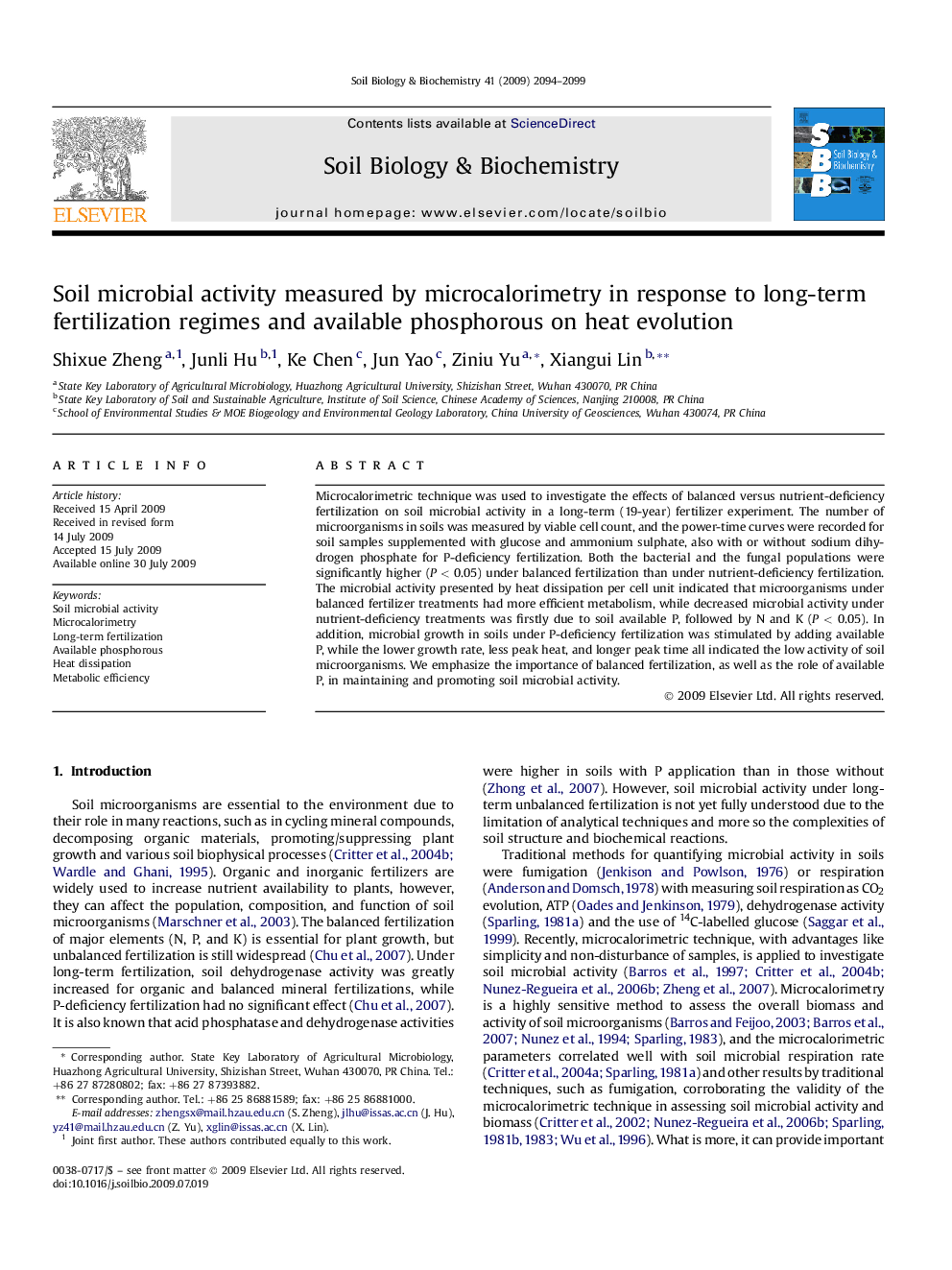| کد مقاله | کد نشریه | سال انتشار | مقاله انگلیسی | نسخه تمام متن |
|---|---|---|---|---|
| 2025973 | 1070015 | 2009 | 6 صفحه PDF | دانلود رایگان |

Microcalorimetric technique was used to investigate the effects of balanced versus nutrient-deficiency fertilization on soil microbial activity in a long-term (19-year) fertilizer experiment. The number of microorganisms in soils was measured by viable cell count, and the power-time curves were recorded for soil samples supplemented with glucose and ammonium sulphate, also with or without sodium dihydrogen phosphate for P-deficiency fertilization. Both the bacterial and the fungal populations were significantly higher (P < 0.05) under balanced fertilization than under nutrient-deficiency fertilization. The microbial activity presented by heat dissipation per cell unit indicated that microorganisms under balanced fertilizer treatments had more efficient metabolism, while decreased microbial activity under nutrient-deficiency treatments was firstly due to soil available P, followed by N and K (P < 0.05). In addition, microbial growth in soils under P-deficiency fertilization was stimulated by adding available P, while the lower growth rate, less peak heat, and longer peak time all indicated the low activity of soil microorganisms. We emphasize the importance of balanced fertilization, as well as the role of available P, in maintaining and promoting soil microbial activity.
Journal: Soil Biology and Biochemistry - Volume 41, Issue 10, October 2009, Pages 2094–2099